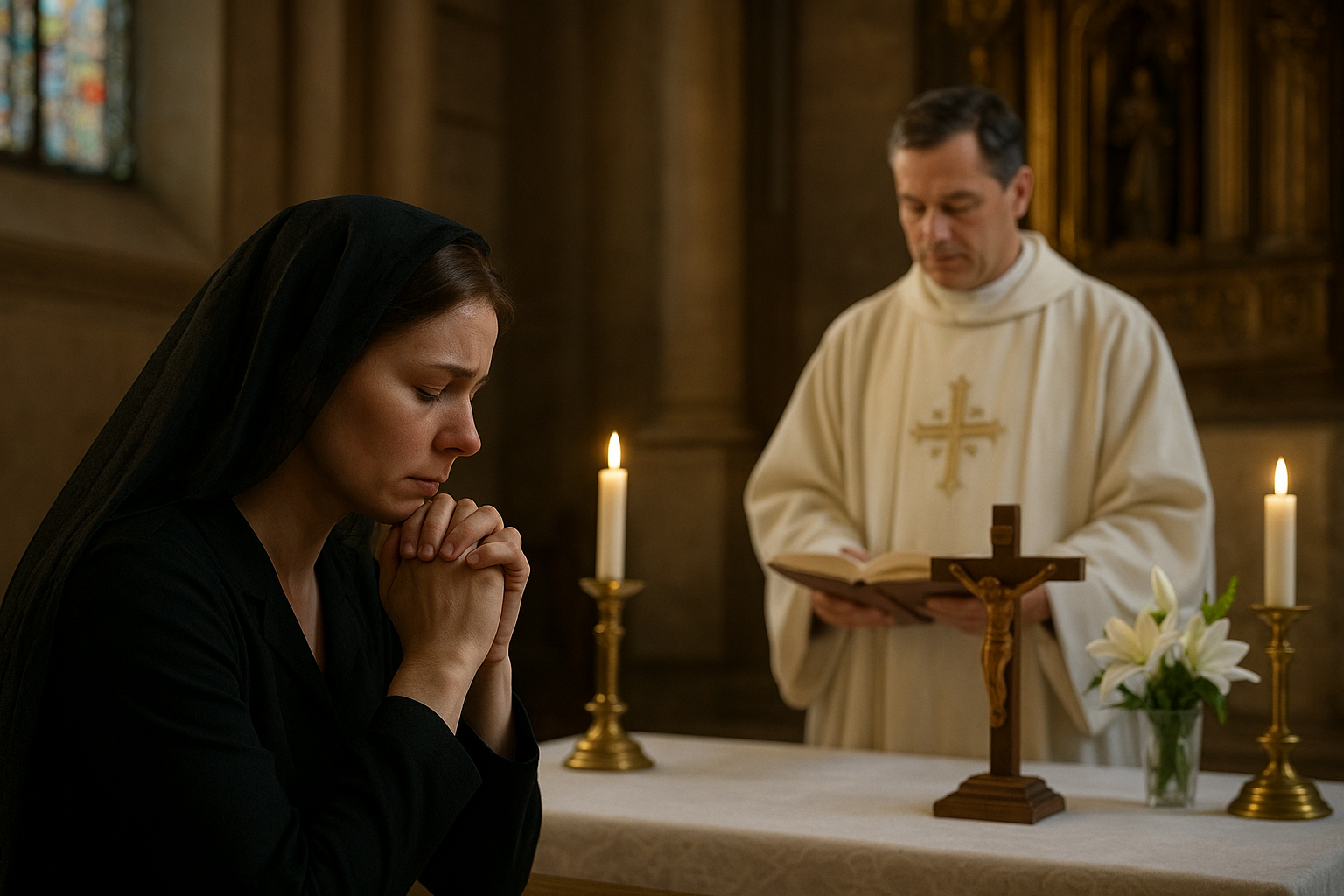The Soul’s Echo: Exploring Grief and Hope in Requiem Masses
The Requiem Mass is an enduring musical tradition steeped in the depths of human emotion, artfully blending the complex palette of grief and hope. Originating in the Christian liturgical practice, the Requiem Mass—a Mass for the dead—offers both a solemn reflection on mortality and a hopeful anticipation of eternal life.
The Origins of Requiem Masses
The term “Requiem” derives from the opening words of the Latin liturgy, “Requiem aeternam dona eis, Domine” (“Grant them eternal rest, O Lord”). These masses can be traced back to the early centuries of Christianity, where they were developed as a sacred rite to honor the deceased. As these masses evolved, they were augmented by the addition of musical settings which grew in sophistication and emotive power over the centuries.
This liturgical form combines a series of prayers, chants, and readings, each carefully chosen to bring comfort to the bereaved while praying for the souls of the departed. These components are designed to guide the mourners from the depths of sorrow to the hope of resurrection and eternal peace.
Symbolism in Requiem Masses
Requiem Masses carry profound symbolic weight. The music and liturgy reflect the duality of death and life, sorrow and redemption. The music often starts with a somber tone, representing the grief of loss, yet gradually shifts to a more hopeful note, embodying the belief in salvation and eternal life.
As musicologist Alex Ross notes, “The Requiem reminds us that grief is a path to healing. Through its strains of sorrow and arching melodies, it feels as though the music itself is whispering to us of brighter tomorrows.” Read more.
Iconic Requiem Compositions
Throughout history, composers have brought their unique flair to the Requiem Mass, interpreting the dual themes of grief and hope in their own musical language. Some of the most influential Requiem Masses include:
- Wolfgang Amadeus Mozart’s Requiem: Perhaps the most renowned of all, Mozart’s Requiem is enveloped in mystique and legend, as the composer died before its completion. His Requiem encapsulates the beauty and terror of mortality, using intricate harmonies to evoke deep emotion.
- Giuseppe Verdi’s Messa da Requiem: Composed in memory of poet Alessandro Manzoni, Verdi’s Messa da Requiem is operatic in its grandeur. It’s celebrated for its vehement “Dies Irae” and the poignant “Libera Me,” painting the struggle between fear and redemption.
- Gabriel Fauré’s Requiem: In contrast to the dramatic flourishes found in Verdi’s work, Fauré’s Requiem is noted for its serene and consoling qualities. Fauré himself described it as “a lullaby of death,” focusing on rest and peace rather than divine judgment.
“Though death is a shadow over man, music is the language of eternity. In the Requiem Masses, human emotion finds its echo in the divine.” – Leonard Bernstein
The Influence on Modern Music
Requiem Masses continue to inspire contemporary composers and artists. This enduring art form finds new expression in modern settings, such as John Rutter’s “Requiem” and Karl Jenkins’ “Requiem,” which blend traditional elements with contemporary influences, ensuring the Requiem’s ongoing cultural relevance.
Additionally, elements of the Requiem Mass have permeated popular music, echoing its themes of loss and hope. This influence is evident in works such as Andrew Lloyd Webber’s “Requiem,” which incorporates modern musical elements while retaining the spiritual essence of the traditional Requiem.
Hope within Grief
At the heart of the Requiem Mass is its transformative power to channel immense sorrow into a shared experience of consolation and hope. It acknowledges the pain of human mortality but also reinforces the promise of something greater beyond death.
The balance of grief and hope in Requiem Masses offers something cathartic, not just for the performers but the listeners as well. It allows audiences to partake in a collective journey, finding solace and renewing their faith in the possibility of a serene afterlife.
The Enduring Legacy of Requiem Masses
As ardent embodiments of human emotion, Requiem Masses remain a vital part of our cultural and spiritual tapestry. They continue to remind us of the universality of grief—and the universal search for hope and redemption.
By expressing the inexpressible sorrow of human existence and the vibrancy of hope, Requiem Masses stand as timeless monuments to the eternal echo of the soul.
